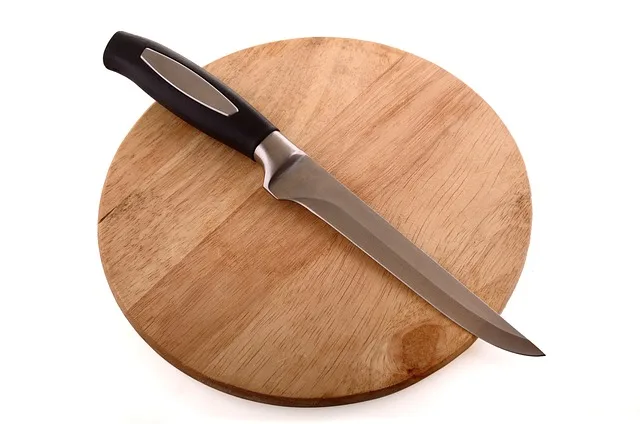First things first, gather your supplies. You’ll need a gentle dish soap, warm water, a soft cloth, and a little bit of elbow grease. Think of the soap as your trusty sidekick, ready to tackle the grime. Mix a few drops of dish soap into a bowl of warm water—this is your magic potion!
Now, dip your cloth into the soapy water, wring it out, and start wiping down those cabinets. Picture yourself as a painter, gently brushing away the layers of grease. Work in small sections, and don’t forget to pay attention to the corners and edges where grease loves to hide. If you encounter stubborn spots, let the soapy water sit for a minute before wiping it away. It’s like giving the grease a timeout!
For those really tough areas, consider using a mixture of baking soda and water to create a paste. Apply it to the greasy spots and let it sit for a few minutes. When you wipe it off, it’s like watching a magic trick unfold—grease be gone!
Finally, rinse your cloth in clean water and give the cabinets a final wipe-down to remove any soap residue. This step is crucial; it’s like giving your cabinets a refreshing drink after a long workout. With just a little effort, your wood kitchen cabinets will look fresh and vibrant, ready to shine in the heart of your home!
Revitalize Your Kitchen: Expert Tips for Removing Grease from Wood Cabinets
First off, let’s talk about the power of natural ingredients. Have you ever tried a mixture of vinegar and water? It’s like a superhero for your cabinets! Just mix equal parts of white vinegar and warm water in a spray bottle, and you’ve got yourself a fantastic cleaning solution. Spray it on the greasy spots, let it sit for a minute, and then wipe it away with a soft cloth. It’s like magic—goodbye grease, hello shine!
Now, if you’re dealing with some serious grease buildup, you might want to step it up a notch. Baking soda is your best friend here. Create a paste by mixing baking soda with a little water. Apply it to the greasy areas and gently scrub with a soft sponge. Think of it as giving your cabinets a spa day—exfoliating away all that grime!
And let’s not forget about the importance of regular maintenance. Just like you wouldn’t let your car go without an oil change, your cabinets need some TLC too. Wipe them down weekly with a gentle cleaner to prevent grease from building up in the first place. It’s a small effort that pays off big time!
From Grimy to Gleaming: The Ultimate Guide to Cleaning Grease Off Wood Cabinets
First things first, gather your supplies. You’ll need a gentle dish soap, warm water, a soft cloth, and a little bit of elbow grease. Think of this as your cleaning toolkit, ready to tackle the mess. Start by mixing a few drops of dish soap into a bowl of warm water. This bubbly concoction is like a magic potion for your cabinets.
Now, dip your cloth into the soapy water, wring it out, and get to work. Wipe down the cabinets in circular motions, almost like you’re giving them a gentle massage. You’ll be amazed at how quickly the grease starts to lift away. It’s like watching a caterpillar transform into a butterfly—satisfying and beautiful!
For those stubborn spots that refuse to budge, don’t lose hope. A paste made from baking soda and water can work wonders. Apply it to the greasy area, let it sit for a few minutes, and then scrub gently. It’s like giving your cabinets a spa day!
Once you’ve banished the grease, rinse your cloth in clean water and wipe down the cabinets again to remove any soap residue. Finally, dry them with a soft towel to reveal that gleaming finish. Your wood cabinets will look so good, you might just want to show them off to the neighbors! Who knew cleaning could be this rewarding?
Say Goodbye to Grease: Transform Your Wood Cabinets with These Simple Cleaning Hacks
First off, let’s talk about the power of vinegar. This kitchen staple isn’t just for salads; it’s a grease-fighting superhero! Mix equal parts of vinegar and water in a spray bottle, and you’ve got yourself a natural cleaner that cuts through grime like a hot knife through butter. Just spray it on, let it sit for a minute, and wipe it away with a soft cloth. You’ll be amazed at how easily that grease disappears!

Next up, baking soda is your best friend. It’s like the Swiss Army knife of cleaning! Create a paste with baking soda and water, apply it to the greasy spots, and let it work its magic for about 10 minutes. When you scrub it off, you’ll feel like you’ve just uncovered a hidden treasure beneath all that gunk.
And let’s not forget about the magic of olive oil. Yes, you heard that right! A little olive oil on a microfiber cloth can not only clean but also condition your wood cabinets. It’s like giving your cabinets a spa day! Just remember to buff it out afterward to avoid any oily residue.
Freshen Up Your Space: How to Effectively Clean Grease from Wooden Kitchen Cabinets
First things first, grab a few simple supplies: warm water, mild dish soap, a soft cloth, and some white vinegar. Think of this as your cleaning toolkit, ready to tackle the grease monster lurking in your kitchen. Start by mixing a few drops of dish soap into a bowl of warm water. This bubbly concoction is like a superhero for your cabinets, ready to fight off the grime.
Now, dip your soft cloth into the soapy water, wring it out, and gently wipe down the cabinets. Imagine you’re giving your cabinets a refreshing spa day! The key here is to go with the grain of the wood. This not only helps lift the grease but also keeps your cabinets looking sharp and polished.
If you encounter stubborn spots, don’t fret! A splash of white vinegar mixed with water can work wonders. It’s like a magic potion that cuts through grease without damaging the wood. Just remember to test it on a small, hidden area first—better safe than sorry, right?
The Secret to Spotless Cabinets: Proven Techniques for Tackling Grease Buildup

First off, think of your cabinets as a canvas. Just like an artist needs the right tools, you need the right cleaning supplies. Grab some warm water, dish soap, and a microfiber cloth. This dynamic trio is your best friend when it comes to cutting through that greasy grime. Mix a few drops of dish soap into the warm water, dip your cloth, and start wiping. It’s like giving your cabinets a refreshing spa day!
Now, if the grease is particularly stubborn, don’t fret! You can whip up a simple baking soda paste. Just mix baking soda with a little water until it forms a paste. Apply it to the greasy spots and let it sit for about 10 minutes. It’s like letting a superhero gather strength before the big battle! Afterward, scrub gently with your cloth, and watch that grease vanish like magic.
For those who prefer a more natural approach, vinegar is your secret weapon. Mix equal parts of vinegar and water in a spray bottle, spritz it on the greasy areas, and let it sit for a few minutes. The acidity in the vinegar breaks down the grease, making it easier to wipe away. It’s like having a tiny cleaning army at your disposal!
So, next time you glance at those cabinets and feel a wave of despair, remember these techniques. With a little effort and the right tools, you can turn that greasy nightmare into a spotless dream!
Banish Kitchen Grease: Step-by-Step Solutions for Pristine Wood Cabinets
First things first, gather your supplies. You’ll need a gentle dish soap, warm water, a soft cloth, and a little bit of elbow grease. Think of this as your cleaning toolkit, ready to tackle the grime. Start by mixing a few drops of dish soap into a bowl of warm water. This bubbly concoction is your secret weapon against grease.
Now, dip your cloth into the soapy water, wring it out, and get to work. Wipe down your cabinets in a circular motion, almost like you’re giving them a gentle massage. This not only lifts the grease but also helps maintain the wood’s natural shine. If you encounter stubborn spots, don’t hesitate to apply a little more pressure—just be careful not to scratch the surface.
For those really tough grease stains, consider using a mixture of vinegar and water. It’s like a magic potion for your cabinets! Just mix equal parts vinegar and water in a spray bottle, spritz it on the greasy areas, and let it sit for a few minutes. Then, wipe it away with a clean cloth. The acidity of the vinegar cuts through the grease like a hot knife through butter.
Frequently Asked Questions
How often should I clean grease from my kitchen cabinets?
Regularly cleaning grease from kitchen cabinets is essential for maintaining a hygienic cooking environment. It is recommended to clean them at least once a month, or more frequently if you cook often or notice buildup. This helps prevent stains and prolongs the life of your cabinets.
Can I use vinegar to clean grease off my wooden cabinets?
Vinegar can effectively clean grease from wooden cabinets due to its natural acidity, which helps break down grime. However, it’s important to dilute it with water to prevent damage to the wood finish. Always test a small, inconspicuous area first to ensure compatibility.
What are the best methods to remove grease from wood kitchen cabinets?
To effectively remove grease from wood kitchen cabinets, start by mixing warm water with a few drops of dish soap. Use a soft cloth or sponge to gently scrub the greasy areas, rinsing frequently. For tougher stains, a solution of vinegar and water can be applied. Always test any cleaning solution on a small, inconspicuous area first to ensure it does not damage the finish. After cleaning, dry the cabinets thoroughly to prevent moisture damage.
Are there any DIY solutions for cleaning grease off wood cabinets?
To effectively clean grease off wood cabinets, mix equal parts of vinegar and water in a spray bottle. Lightly spray the solution onto the greasy areas and wipe with a soft cloth. For tougher stains, create a paste using baking soda and water, apply it to the grease, let it sit for a few minutes, then gently scrub and wipe clean. Always test any solution on a small, inconspicuous area first to ensure it does not damage the finish.
What cleaning products are safe for wood kitchen cabinets?
For cleaning wood kitchen cabinets, use gentle, pH-balanced cleaners specifically designed for wood. Avoid harsh chemicals, ammonia, or abrasive materials that can damage the finish. A mixture of mild dish soap and warm water is effective for regular cleaning. Always test any product on a small, inconspicuous area first to ensure it does not harm the wood.